The most recent “surgical” first in Sri Lanka to hit the headlines is a liver transplant from a live donor just weeks ago. Skilled surgeons, modern technology and well-equipped hospitals are prerequisites to perform complex surgery in this advanced 21st century.
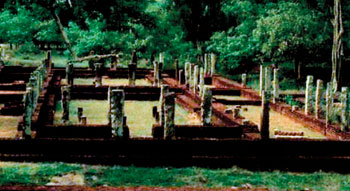 |
| The 12th century hospital
at Polonnaruwa |
Veteran archaeologist Prof. Leelananda Prematilleke, however, leaves the modern behind and takes a walk down the corridors of time to 12th Century Polonnaruwa.
Not only was there a fully-functional hospital but it also had both medical equipment and surgical instruments over 800 years ago.
“The finds at Polonnaruwa are unique,” says Prof. Prematilleke, for it is the only hospital site from around the world in archaeological terms that a number of surgical instruments have been unearthed in addition to medical equipment.
When the Sunday Times meets Octagenarian Prof. Prematilleke, formerly Head of the Department of Archaeology of the Peradeniya University and Founder-President of the Sri Lanka Council of Archaeologists, the memories flow back to excavations by his students under his guidance in Polonnaruwa in 1981.
As Director of the UNESCO-Sri Lanka Cultural Triangle Project at Polonnaruwa tasked with finding out the “treasures” buried under the sands of time in this second kingdom of Raja Rata, Prof. Prematilleke and his students “camped” in a clubhouse there, began a chummery, employed the villagers as labourers on the site and set to work.
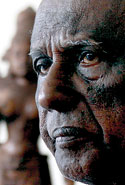 |
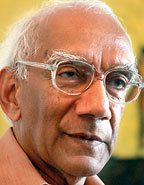 |
| Prof. Prematilleke |
Prof. Aluwihare |
The scorching Raja Rata sun beat down on them as they focused on the Alahana Parivena complex. Earlier excavations of about 5% in Polonnaruwa had only been for conservation, he says.
Hard but meticulous work gradually unearthed edifices. “The best find was the hospital,” he remembers with satisfaction, explaining that not only did they find the remnants of stone and brick but also equipment, medical and surgical.
It was a monastic hospital that they discovered in 1982 within the Alahana Parivena, one of the largest monastic complexes founded by Physician-King Parakrama Bahu I (1153-1186 AD).
As Prof. Prematilleke turns the spotlight on the “prize and unique find” at the hospital, his face lights up – it is a bronze micro-balance. “It may very well be the smallest of its kind in the world,” he says with pride, describing the micro-balance in detail.
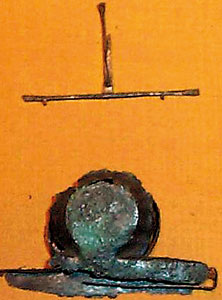 |
| The micro- balance and its box: Could be the smallest of its kind in the world |
 |
| Forceps with long handle |
 |
| Scalpel with wooden handle |
 |
| Scissors with thick metal handle |
Having a shaft measuring just 8cm, the scale rod with its fulcrum is still functioning and contains tiny holes at each end to pass the cords to hang the pans.
The pans, however, are missing.
The balance would have been used to weigh minute quantities of very potent medicinal material such as musk, opiates and heavy metals such as gold and mercury.
The shape of the bronze box, which he compares to a spectacle case in which the scale rod was found indicates it would have held the two pans as well.
Going back to the hospital structure, Prof. Prematilleke says the large oblong edifice of the hospital (147.5ftX109.2ft) was on the south side of the lowest terrace of several terraces, fashioned out of a hillock. Similar to the hospital found at Mihintale, this too had inner and outer courts. But whereas the Mihintale hospital was asymmetrical, this was not, it is learnt.
The inner court is surrounded by cells similar to long dormitories, while the outer court is set apart for dispensing medical treatment, explains Prof. Prematilleke who points out evidence in the form of the positioning of the medicine trough in a corner cell, while the other cells are longer rooms most probably to accommodate the sick. The centre of the open inner court indicates an image shrine which probably would have been built on pillar struts.
The variety of medical equipment and surgical instruments points the way to medical practice in the past, according to Prof. Prematilleke.
Advising current health-care personnel to take a leaf from the book of the Polonnaruwa monastic hospital, Prof. Prematilleke points out that the environment in which it was located was also conducive to bringing about good health.
It was built on a large expanse of flat land in an uncrowded open space which allowed free movement. Toilets and baths were attached to the living quarters.
Within the hospital itself, there was maximum ventilation and free circulation of air due to two open courts in addition to the windows. This indicates that the psychological aspects of therapeutics were understood by our forefathers, he says.
Waxing eloquent on the hospital garden, Prof. Prematilleke said medicinal trees such as Margosa (Kohomba) and Cassia Fistula (Ahala), trees endemic to the Dry Zone had been planted while flowering plants among rock boulders helped beautify the surroundings.
This aesthetic outlook would have dispelled the hospital phobia that many patients would have had and still have, he says adding it would no doubt have psychologically alleviated the otherwise suffering mind.
Referring to the importance of the practice of medicine even at that time, Prof. Prematilleke quotes the Mahavamsa. “.......he, the all-wise summoned the physicians appointed there (hospital), tested in every way their healing activities and if their medical treatment had been wrongly carried out, ......he met them with the right method, pointed it out to them, as the best of teachers and showed them the proper use of instruments by skilfully treating several people with his own hand”.
The “he” was none other than King Parakrama Bahu I, a reputed medical practitioner and teacher of medical lore.
Medical equipment and their uses
- Beheth-oruva or medicine trough also found at Anuradhapura, Mihintale, Medirigiriya and Dighavapi was used to immerse patients with snake-bite or those suffering from rheumatism in a bath of herbal juices or oils for a specified period according to the medical code. The elevation of the head-rest enabled the patient’s head to be above the fluid level. To this day, native physicians treat snake-bite victims by placing them in oil and herbal baths in wooden troughs, says Prof. Prematilleke.
- Grinding stones used to grind herbal foliage for the extraction of juice had been found close to the medicine trough. There were two types of pestles – one for horizontal and the other for vertical grinding.
- Storage vessels for oils formed an important part of the equipment. Bearing even the manufacturers stamps, some of them were Chinese celedons of the Sung period (10-13th century).
- A well-preserved spoon similar to those found in Rome in Italy and Taxila in India used to mix or administer medicine.
- Different-sized bronze probes used for the application of medicine at sensitive spots such as the eye-lids and nostrils. The current cotton buds are most probably their descendants, laughs Prof. Prematilleke.
Spoon, scalpel, forceps: Raja Rata had them all
Reiterating that finding surgical instruments at the monastic hospital validates the truth of texts that surgical operations were done there, Prof. Arjuna Aluwihare, Professor Emeritus (Surgery) of the University of Peradeniya, describes the purposes of those instruments.
Pointing out that Prof. Prematilleke has dealt only with the “polite” use of the spoon, he creates the image of wounds being scraped out by it. “Even when rectums got bunged up, the spoon may have been used to ease out the stuff,” he says, adding, of course that it could be washed well and then used for eating.
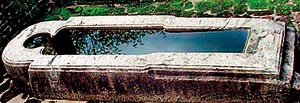 |
| Beheth-oruva |
 |
| A well-preserved spoon |
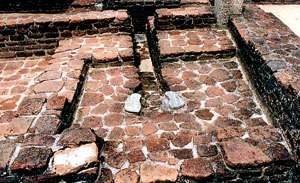 |
| Attached toilets and baths at the hospital |
The probes which also may have doubled up as applicators, may not necessarily have been used to go into an opening, according to Prof. Aluwihare, who takes us back to times when there were no X-rays to determine whether a patient had stones in the bladder.
The probe may have been sent up and as it was metal, if the medical practitioner heard a big noise when it came into contact with the stone, it would have been diagnosed as stones in the bladder, he says.They may have also been used to probe a sinus or fistula and to determine the depth of a cavity.
Prof. Aluwihare speculates whether different types of forceps, with long handle/thin jaws and short handle/short jaws were used for teeth or bones.
The scissors with the thick, metal handles found at the hospital may have been used to cut dressings, according to this famous surgeon, while the pair with, most probably the wooden handles missing, with the blunt tip may very well have been to trim wound edges,excise slough and cut sutures.
The scalpel with the wooden handle may have been used for non-emergency operations, says Prof. Aluwihare.
Meanwhile, dealing with the all-important question of why such medical practice may have declined, he places his bet on “infighting among medical professionals”.
When he talks of “infighting” in lectures abroad, he quips, he is asked whether he is in fact referring to 12th century Polonnaruwa or America or Britain today.
Therefore, like the 12th century surgical instruments which are similar to those in use today, Prof. Aluwihare adds that many are the other lessons we could learn from our ancients and what pitfalls like infighting we should avoid.
(The National Trust organized a lecture on this hospital to a packed house last Thursday at SLAAS)
|











